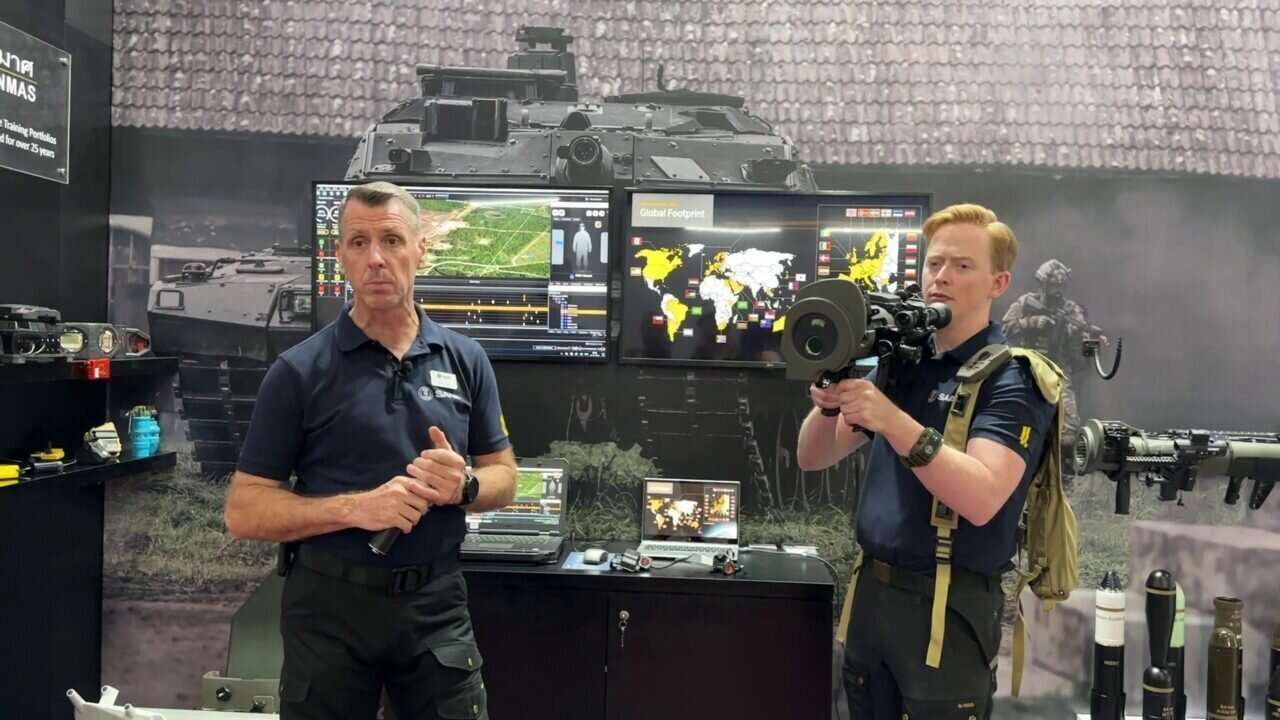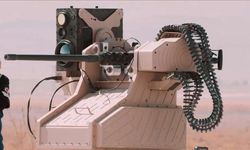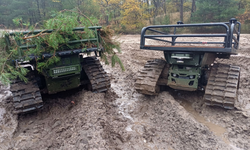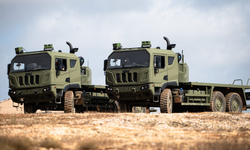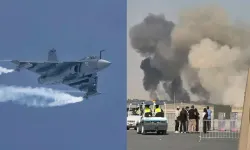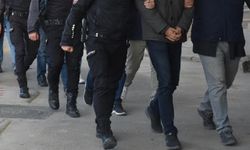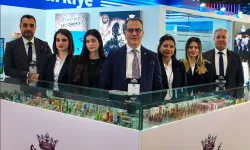Neil Patrick, Director of Marketing and Sales for Asia Pacific for Saab Training and Simulation said the simulation system consists of three key components: simulators, exercise control and communication system.
Patrick explained how a soldier is fitted with this pack:
“Firstly, we have and importantly, the soldier system. Each soldier or individual that is instrumented wears what we call a personal detection device. This device has a communication system, a power system for sensors on the back detectors, four on the front, and a personal computer unit which gives commands and acoustic feedback. Augmenting that, we also have this here. This is the halo, it sits up on top of the combat helmet, like so with a detector on the top.
And it communicates with the vest by an inductive loop. If the individual takes his helmet off, we will know that it increases his vulnerability.
To augment the soldier, of course, most important is his weapon system. This here is the BT47 small arms transmitter, which fits on each individual's weapon, fits on by a bespoke bracket and then is paired automatically to the vest every time a blank round is fired on the individual's weapon.
This then sends a signal to the PDD (Personal Detection Device), which then informs exercise control. If indeed the individual is hit, we can then get various different effects on the individual. So, for instance, a near miss, you get an acoustic sound from the PCU (Personal Computer Unit), which indicates the individual is coming under effective enemy fire circa one meter around him.
His PCU tells him in this case wounded right arm and is also augmenting his system. He has this item, an engagement feedback device that gives visual haptic and acoustic feedback dependent on the type of injury that the casualty has incurred. If I kill the individual straight away, again, different haptic, different acoustic, different visual indication at that point in time as well, the weapon becomes disabled.
That is to say his PCU will say weapon disabled, so it cannot fire a blank round. He's out of the exercise.”
Packs to fit into battlefield vehicles are a second vital part of system said Patrick:
“We have two types of vehicle system. A regular and a premium. A premium is more geared towards the main battle tanks, where we then require ballistic capability on main guns and coaxial guns firing at distance. The BT47 is for small arms engagement, so out to about 600 meters where time of flight is relatively, relatively unimportant.
This will be put on a main battle tank, remote weapon stations, etc. We also have various types of detectors that go round the vehicle, these being the regular and these being the premium detectors. Note these have prisms, and that is to enable ballistic simulation from the compact ballistic laser that I've just shown you.
Also, to augment capability, we have items like this fragmentation grenade, which again sends a short-range radio effect to injure, kill, wound the soldier or indeed for paramilitary or police organizations. Items like this, the stun grenade, which doesn't have a kill effect, has a stun effect. And also both have flashbang smoke simulation effects in the bottom.
We also have personal detection devices which has a GPS up on the top left shoulder. What happens when we go into a building? We obviously lose GPS connectivity, in which case we then place the sensor systems around the building which detect where the PDD is and then sends information back to the exercise control, where we can visualize where that individual is in a software model of the building.
So that's assets for vehicles, soldiers. And we also have capability expansion packs, counter-IED (Improvised Explosive Device), CBRND (Chemical, Biological, Radiological and Nuclear Defense), mortar, drone effects and of various suites of other capabilities from the modern battlefield. So how does that information then get from the individual or the vehicle back to exercise control? In this case, we're demonstrating a small MANPACK capability. It's an expeditionary exercise.”
What is the maximum capacity of this simulation pack? Patrick said they can take up to 120 players:
“100 soldiers, 20 vehicles or a blend of each up to a maximum of 120 entities. All these items are sending information back to the base station, which is then communicating with exercise control, visualizing the activity. All the data in ex-con here is being harvested from all these technical items, giving us information to draw back, in essence, to conduct an after-action review.
In summary, that is the Saab live instrumentation capability, extremely inclusive of all assets, assets that we require on the modern-day battlefield.”
